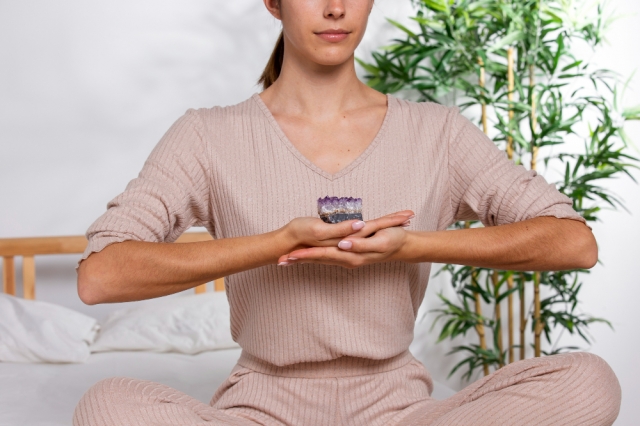The way we experience the world often begins with what we smell. A whiff of fresh citrus can spark focus. Warm vanilla might bring back memories of family gatherings. Even subtle notes like mint or lavender can calm a racing mind or make a space feel more inviting.
Scent has always played a quiet yet powerful role in shaping our emotions and behaviors. Today, more people are exploring ways to intentionally use aromas to improve their everyday lives. From candles and essential oils to culinary herbs and personalized products, scent-driven choices are becoming a regular part of wellness routines.
How exactly does scent influence our mood and memory? And what does this mean for the way we design our homes, manage stress, and even make personal lifestyle choices?
The Brain-Scent Connection
When you smell something, that scent travels through your nose to the olfactory bulb, which is directly connected to parts of the brain that regulate emotion and memory. Unlike visual or auditory input, scent has a more direct path to the amygdala and hippocampus, two areas that process feeling and recall.
That’s why certain smells can trigger vivid flashbacks or emotional responses, often without warning. It’s also why aromatherapy has gained traction not just as a spa trend but as a tool in emotional health and focus.
People dealing with stress, burnout, or emotional fatigue are often encouraged to use essential oils such as eucalyptus, rosemary, or frankincense in calming rituals or productivity practices. While results can vary from person to person, the goal is the same: to support the mind by engaging the senses.
Designing Your Environment with Scent
More people are becoming intentional about how they scent their spaces. It’s not just about masking odors. It’s about aligning aroma with what you want to feel.
Some people use uplifting scents like grapefruit and peppermint in their workspaces to support energy and clarity. Others rely on deep, grounding notes like cedarwood and sandalwood to make bedrooms feel restful and safe.
These choices often evolve seasonally or with shifting emotional needs. During winter, warm spices like clove and cinnamon feel comforting. In summer, crisp herbal blends keep things feeling clean and refreshed.
What’s important is that scent can be a gentle yet meaningful form of self-care, and it can be tailored to your unique lifestyle and preferences.
Personalized Choices and the Rise of Scent Variety
The demand for personalized wellness experiences has grown, and scent is no exception. This is evident in everything from niche perfume brands to multi-sensory yoga classes. It also shows up in more casual spaces, like flavored teas, self-care rituals, and even the vaping industry, where a wide variety of flavor profiles has helped people explore sensory preferences in new ways.
Some platforms reflect just how broad these preferences can be. People choose from fruit-forward blends, dessert-inspired notes, or earthy tones that fit their moods or routines. For those who use these types of products, it becomes another layer of identity expression, not unlike picking a signature fragrance or favorite candle scent.
This trend highlights how people are no longer interested in a one-size-fits-all approach to sensory input. They want variety, customization, and experiences that feel tailored to their daily rhythm.
How Scent Can Support Lifestyle Goals
The role of scent in motivation and habit formation is subtle but powerful. For example, pairing a specific scent with a focused activity, like lighting a rosemary candle when journaling, can help your brain associate that smell with being reflective and calm. Over time, your mind begins to shift into that state more quickly when the scent is present.
Here are a few ways to explore scent in everyday routines:
- Focus and Work: Use citrus, peppermint, or pine oils near your desk to support alertness.
- Rest and Recovery: Lavender, neroli, or chamomile can ease tension and promote calm before bed.
- Mindful Eating or Cooking: Savor scents while preparing meals to increase presence and gratitude.
- Creative Flow: Unique scents like black tea, ginger, or bergamot may help spark fresh ideas.
- Stress Support: Inhale grounding notes like vetiver or patchouli when you need to reset emotionally.
The goal is not to treat scent as a solution, but as a supportive tool. By aligning it with your intentions, you give your body and brain a cue to respond.
A Future Built on Sensory Well-being
As wellness continues to evolve, more attention is being paid to the multi-sensory elements of health. Apps, devices, and programs all use sound, light, and scent to help people manage stress and improve focus.
Whether you gravitate toward natural scents or explore modern expressions through personal products, the common thread is that scent has emotional value. It’s deeply personal, powerfully evocative, and a tool that more of us can use to craft lives that feel intentional and supportive.
When you create space to breathe in something that feels good, you’re making a small but meaningful decision to ground yourself. In today’s world, those moments of presence matter.






